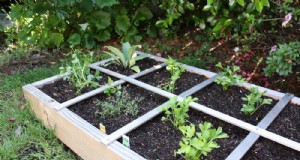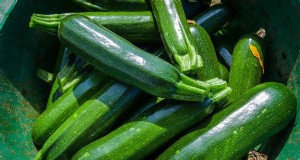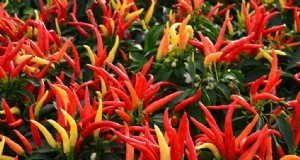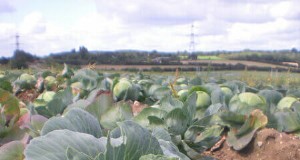学習内容:
- 植栽帯とは
- 現在の栽培ゾーンは?
- 耐寒性とは?
- 植物の耐寒性ゾーンの内訳
植栽帯とは?
植栽ゾーンは、特定の地域またはゾーンで繁栄するのに最適な植物を正確に示す成長ゾーン マップ上で見つけることができるエリアです。あなたの庭の景観のために新しい植物を購入するとき、「耐寒性ゾーン」、「成長ゾーン」、および「植栽ゾーン」という用語は、最初は少し混乱するように見えるかもしれません.本質的に、植物の耐寒性ゾーンは、その地域で冬を生き残る可能性が最も高い植物を特定するために、栽培者によって何年も使用されてきました.耐寒性ゾーン マップを理解できるということは、賢明な植え付けの決定を下すための出発点が得られることを意味します。
栽培ゾーンの温度範囲
植栽ゾーンは、ハワイ、アラスカ、プエルトリコを含む米国全体をカバーする USDA ゾーンとしても知られる 13 の地域に分類されます。各農業地帯は 10 度の範囲をカバーしています。ゾーン 1 は最も寒く、冬の平均最低気温は華氏 -60 度から -50 度で、ゾーン 13 の冬の最低平均気温は華氏 60 度から 70 度です。
現在の植栽帯は?
ガーデニング ゾーンを理解することは、冬に生き残る可能性が最も高い植物に時間と注意 (お金は言うまでもありません) を集中できることを意味します。 Gilmour の Interactive U.S. Planting Zone Map for 2019 は、USDA からのデータと特定の地理情報を組み合わせて、栽培地域の全体像を提供します。インタラクティブな植栽ゾーン マップの 13 のゾーンはそれぞれ 2 つの部分に分割され、各ゾーンで 5 度刻みになっています。私がどのゾーンにいるのかを尋ね、私たちのようなインタラクティブな成長ゾーン マップを使用すると、うれしい驚きがあり、最終的には考えもしなかった多くの植物を育てることができることに気付くでしょう!
あなたが特定のゾーンにいると単純に仮定して、何が最もよく成長するかをすでに知っていると考えるのではなく、近くの主要都市をクリックして、正確な地域に固有の詳細情報を表示してください.個々のゾーンは、もはや単に全国を行き来する単なるバンドではありません。詳細なセクションは、複数の要因に基づいています。
州をクリックすると、州の花、主要都市圏のリスト、ガーデニング ゾーン、気候の概要など、基本的な概要が表示されます。最寄りの大都市圏をクリックすると、ガーデニングの決定に役立つさらに詳細な情報が表示されます。
メトロ レベルでは、以下にアクセスできます。
植物の耐寒性とは?
植物の耐寒性とは、干ばつ、洪水、暑さ、寒さなどの生育に不利な気候に耐える植物の能力です。植物の丈夫さの背後にある科学は複雑になる可能性があります.植物遺伝学は、植物が損傷することなく低温に耐える能力を決定します。植物の各品種は、適応と遺伝学に基づいて異なる耐寒性レベルを持つ場合があります.植物のさまざまな部分でさえ、さまざまな方法で丈夫な場合があります.たとえば、寒さで最愛の多年生植物が枯れる可能性があります。ただし、根は春に新しい成長をもたらすのに十分丈夫かもしれません.
多くの植物は、繁栄するために非常に特殊な生育環境を必要とします。庭の土壌の種類、水分レベル、日光の量など、多くのことを調整できますが、温度を制御するのは難しい場合があります。特定の植栽ゾーンに適した耐寒性レベルの植物を選択すると、ガーデニングと造園を成功させる可能性が最も高くなります。
植物の耐寒性ゾーンの内訳
簡単に言えば、USDA 耐寒地帯は、アラスカの生産者が桃の木を植えるという間違いを犯さないようにします。さまざまな植物の耐寒性ゾーンを理解することで、ガーデニングの選択肢を絞り込むことができます。植物が特定のゾーンに耐えられる場合、通常、それよりも高いゾーン番号でもうまく機能することに注意してください.たとえば、ゾーン 3 に耐えるほとんどの植物は、他の植物の要件が満たされている限り、ゾーン 7 でうまく機能します。あなたの庭に何を植えるかを計画するための出発点として、個々の生育ゾーンに関する情報を使用してください.スクロールして各耐寒性植栽ゾーンの詳細を読むか、以下のリンクを使用してゾーンに直接ジャンプしてください。
ゾーン 1 |ゾーン 2 |ゾーン 3 |ゾーン 4 |ゾーン 5 |ゾーン 6 |ゾーン 7 |ゾーン 8 |ゾーン9 |ゾーン 10 |ゾーン 11 |ゾーン12
植栽ゾーン 1
USDA Plant Hardiness Zone 1 は、米国で最も寒いゾーンの指定です。最低平均気温が華氏 60 度から 50 度の間で、ガーデニングには難しいゾーンになる可能性があります。ゾーン 1 の大部分はアラスカにあります。このツンドラ環境は非常に過酷であり、植物は極度の耐寒性と干ばつ耐性を備えている必要があります.
ゾーン 1 の温度
ゾーン 1 の最低平均気温は華氏 -60 度から -50 度です。
ゾーン 1a の最低平均気温は華氏 -60 ~ -55 度です
ゾーン 1b の最低平均気温は華氏 -55 ~ -50 度です
気象条件によっては、2 つのサブゾーンのそれぞれがより厳しい気温になる可能性があります。
ゾーン 1 で育てることができる植物は何ですか?
ゾーン 1 での植栽は非常に難しい場合があります。ツンドラに耐えることができる植物はまれです。在来植物はすでにその地域に適応しているため、自然で優れた選択肢であることは理にかなっています。一年生植物は、冬を越す必要がないため、人気のあるオプションです。ゾーン 1 に適した非在来の多年草は比較的少ないですが、適切な植え付けと手入れで栽培できるものもあります。
ゾーン 1 で育てる野菜
ほとんどの野菜は一年生植物として栽培されるため、野菜の耐寒性は栽培期間の長さほど考慮する必要はありません。屋内または温室で植物を有利にスタートさせると、通常、ゾーン 1 の野菜の成功率が向上します。
人気のあるゾーン 1 の野菜には以下が含まれます:
- 豆
- ブロッコリー
- キャベツ
- ケール
- レタス
- じゃがいも
- 大根
- ほうれん草
- スイートピー
- トマト
ゾーン 1 で育つ果樹
ゾーン 1 の極端な寒さに耐えられるほど丈夫な果樹はほとんどありません。しかしながら、適切な条件が与えられれば、次の果樹は繁栄する可能性があります:
- チョークチェリー
- エンドアップル
- フォート マック マック アップル
- ハスカップ
- 9 月のルビー アップル
ゾーン 1 で育てるハーブ
ゾーン 1 では、ほぼすべてのハーブを一年生植物として育てることができます。これらを一年草として植えることを検討してください。
- バジル
- チャイブ
- ミント
- オレガノ
- ローズマリー
- タイム
ゾーン 1 で育てる花
ゾーン 1 の花は、干ばつに強く、非常に耐寒性に優れている必要があります。最も一般的な成長中の選択肢は次のとおりです。
- アローヘッド
- デルフィニウム
- ゴールデンロッド
- ひまわり
- スズラン
- フランスギク
- ノコギリソウ
植栽ゾーン 2
アラスカと米国本土の両方に位置する植栽ゾーン 2 は、平均最低気温が華氏 50 度から 40 度と非常に寒いことを特徴としています。ゾーン 2 のツンドラ地帯と平野部の両方で、強風と干ばつの状況が見られます。自生植物を植え、一年生植物を育て、創造的な植栽技術を使用することで、庭師はますます有利になります。
ゾーン 2 の温度
ゾーン 2 では、最低平均気温が華氏 -50 ~ -40 度と予想されます
ゾーン 2a の最低平均気温は華氏 -50 ~ -45 度です
ゾーン 2b の最低平均気温は華氏 -45 ~ -40 度です
気象条件によっては、2 つのサブゾーンのそれぞれがより厳しい気温になる可能性があります。
ゾーン 2 で育てられる植物は何ですか?
ゾーン 2 の植物は、極端な寒さと高レベルの干ばつに耐えることができなければなりません。自生植物は環境に最もよく適応します。一年生植物はこのゾーンに最も適していますが、慎重に選択することでいくつかの多年生植物を育てることができます.
ゾーン 2 で育てる野菜
ゾーン 2 の極端な寒さに耐えることができる多年生野菜はほとんどありません。最良の結果を得るには、成長期が短い一年生野菜を探してください。ゾーン 1 の野菜に加えて、植え付けを検討してください:
- ニンジン
- からし菜
- 玉ねぎ
- パースニップ
- フダンソウ
ゾーン 2 で育つ果樹
ゾーン 2 の果樹にはいくつかの選択肢があります。植える場所を慎重に検討することで、確実に成功を収めることができます。ゾーン 2 の丈夫な果物の品種は次のとおりです。
- ブルックゴールド プラム
- 秋の赤いリンゴ
- フォフォノフ プラム
- ガリントン・チョークチェリー
- 朝鮮松
- ミネソタ 1734 アップル
- ノルケントアップル
- パークランド アップル
- ペンビナ プラム
ゾーン 2 で育てるハーブ
ゾーン 2 は、植え替えまたは自家播種による一年生ハーブの栽培に最適です。次のハーブは、ゾーン 2 の耐寒性があると見なされます:
ゾーン 2 で育てる花
在来の植物は、ゾーン 2 の柔らかい多年草にとって最良の選択肢です。しかし、多くの園芸家は、同様の環境の植物を組み合わせることで成功しています。植えることを検討してください:
- ブリーディング ハート
- 僧侶
- ペンステモン
- ポピー
- サクラソウ
- ヒイラギ
- バイオレット
植栽ゾーン 3
植物の耐寒性ゾーン 3 は、アラスカ全体、米国北部および高地で見られます。このゾーンは最低平均気温が華氏 -40 度から -30 度です。栽培スペースの地理的位置によっては、強風、極端な寒さ、低湿度が生育条件に影響を与える可能性があります。
ゾーン 3 の温度
ゾーン 3 の最低平均気温は華氏 -40 ~ -30 度です。
ゾーン 3a の最低平均気温は華氏 -40 ~ -35 度です
ゾーン 3b の最低平均気温は華氏 -35 ~ -30 度です
気象条件によっては、2 つのサブゾーンのそれぞれがより厳しい気温になる可能性があります。
ゾーン 3 で育てられる植物は何ですか?
ゾーン 3 の最低平均気温が低いため、植物の選択は低温に適応したものに制限されます。ほとんどの在来植物は、生育条件が類似している限り、高度に関係なく、ゾーン全体で生育できます。生育期が短いため、野菜と開花の一年生植物は限られますが、屋内で植物を植えたり、温室から購入したりすることで、生育期を延ばすことができます.
ゾーン 3 で育てる野菜
生育期間が短く、土壌温度が低いため、ゾーン 3 の菜園は制限されています。早霜に負けないように早く成熟する野菜を植えましょう。ゾーン 1 と 2 の丈夫な植物に加えて、次の植栽を検討してください:
- アスパラガス
- セロリ
- きゅうり
- 夏のカボチャ
- 冬のかぼちゃ
ゾーン 3 で育つ果樹
ゾーン 3 に適した木がたくさんあります。一般的な果樹のオプションは次のとおりです。
- キューピッド チェリー
- ドルゴクラブアップル
- 初期の金梨
- エヴァンス・チェリー
- ゴールデン スパイス梨
- グッドランド アップル
- スイート 16 アップル
- 十日梅
- ワネタプラム
- ウェストコットアプリコット
ゾーン 3 で育てるハーブ
一年草に加えて、ゾーン 3 に適した丈夫なハーブには次のものがあります。
- キャラウェイ
- キャットニップ
- イングリッシュ カモミール
- スイバ
- にんにく
- ホースラディッシュ
- パセリ
- ペパーミント
ゾーン 3 で育てる花
ゾーン 3 の低温に耐えられるほど丈夫な花がたくさんあります。一般的な選択肢は次のとおりです。
- アルパイン ロッククレス
- アスター
- ブランケットフラワー
- リアトリスの品種
- サルビア
- 夏の雪
- スパージ
- バージニア ブルーベル
- ウォールフラワー
植栽ゾーン 4
植栽ゾーン 4 は、アラスカ南部の沿岸地域、米国の北部地域、および西部の山々に見られる標高の高い地域をカバーしています。これらの独特な気候は、最低平均気温が華氏 -30 度から -20 度の間です。この地域での栽培は、寒冷地ほど難しくありませんが、生育期が短いため、野菜と花の開花時期に影響を与えます。
ゾーン 4 の気温
ゾーン 4 では、最低平均気温が華氏 -30 ~ -20 度と予想されます
ゾーン 4a の最低平均気温は華氏 -30 ~ -25 度です
ゾーン 4b の最低平均気温は華氏 -25 ~ -20 度です
気象条件によっては、2 つのサブゾーンのそれぞれがより厳しい気温になる可能性があります。
ゾーン 4 で育てられる植物は何ですか?
ゾーン 4 は、氷点下の温度に耐えるのに十分丈夫な植物を育てるのに適した冷涼な気候と考えられています。典型的には短い生育期に対抗するために、庭師は屋内で植物を開始するか、温室から植物を購入することで有利なスタートを切ることができます.十分なマルチ層を追加し、予防的な冬の対策を講じることで、一部の植物は寒い冬を乗り切ることができます。
ゾーン 4 で育てる野菜
多年生の野菜として、ルバーブはゾーン 4 に耐えます。屋内で開始する場合は、以下の植物を家庭菜園に追加することもできます:
ゾーン 4 で育つ果樹
ゾーン 4 には、次のような耐寒性果樹が植えられています。
- 市会議員プラム
- アレクサンダー アップル
- バートナット
- バターナッツ
- ユーイングブループラム
- 新星ナシ
- 鉄道リンゴ
- 夏のさわやかなナシ
- トレント アップル
ゾーン 4 で育てるハーブ
次のような多くのハーブは、冬の間にマルチを適用するだけで、ゾーン 4 に耐えるようになります。
- アンジェリカ
- ビーバーム
- ガーデンセージ
- レモンバーム
- マウンテンミント
- タイム
- 冬の香ばしさ
ゾーン 4 で育てる花
ゾーン 4 地域には、最も寒い冬でも丈夫な多年生の花がいくつかあります。ゾーン 4 を計画している場合は、これらの花を検討してください:
- コーンフラワー
- カンゾウ
- アイリス
- フロックス
- オオバコ (Hostas)
植栽ゾーン 5
植物の丈夫さ ゾーン 5 には、アラスカ南部沿岸地域、米国中北部、およびニューイングランドの一部が含まれます。最低平均気温は華氏 -20 度から -10 度の間で、この地域は適度に寒い冬を経験します。成長期は短いですが、コールドフレームを使用するか、毎年の庭で開始された植物を使用することで、成長期を延ばすことができます.
ゾーン 5 の気温
ゾーン 5 では、最低平均気温が華氏 -20 ~ -10 度と予想されます
ゾーン 5a の最低平均気温は華氏 -20 ~ -15 度です
ゾーン 5b の最低平均気温は華氏 -15 ~ -10 度です
気象条件によっては、2 つのサブゾーンのそれぞれがより厳しい気温になる可能性があります。
ゾーン 5 で育てられる植物は何ですか?
ゾーン 5 の庭園には、さまざまな環境があります。沿岸水域や森林地帯から中西部の広い平原まで、植物は耐寒性だけでなく、生育環境に適合する必要があります。庭は生育期が長く、野菜の収穫量が増え、造園で花が長く咲きます。
ゾーン 5 で育てる野菜
上げ床と畝カバーは、ゾーン 5 の土壌を温め、生育期を長くします。春の野菜を植えた後は、早生の作物を植えます。お住まいの地域によっては、夏の終わりに秋の収穫に向けて、次のような涼しい季節の野菜が繰り返される場合があります。
ゾーン 5 で育つ果樹
以下を含む多くの果樹は、ゾーン 5 に耐性があります。
- Harrow Delight梨
- ハニークリスプ アップル
- 在来のポポーの木
- ピンク レディー アップル
- スノービューティーピーチ
- 上等なプラム
- ミズナラ
ゾーン 5 で育てるハーブ
ゾーン 5 の庭に適した多年生ハーブには、次のものがあります。
ゾーン 5 で育つ花
適切な植え付けと世話をすることで、多くの多年生の花は、ゾーン 5 の寒い冬を乗り切るのに十分丈夫です。
- バプティシア
- 黒い目のスーザン
- カンパニュラ
- シンクフォイル
- ロシアンセージ
植栽ゾーン 6
USDA Hardiness Zone 6 は、米国の大部分をカバーしています。一般的に温暖な気候として知られている冬の平均最低気温は華氏 10 度から 0 度の間です。冬は寒く、夏は穏やかから暑いため、ゾーン 6 には多くの栽培オプションがあります。
ゾーン 6 の気温
ゾーン 6 では、最低平均気温が華氏 -10 ~ -0 度と予想されます
ゾーン 6a の最低平均気温は華氏 -10 ~ -5 度です
ゾーン 6b の最低平均気温は華氏 -5 ~ -0 度です
気象条件によっては、2 つのサブゾーンのそれぞれがより厳しい気温になる可能性があります。
ゾーン 6 で育てられる植物は何ですか?
ゾーン 6 には、ガーデニングや造園に最適な植物がたくさんあります。種子会社、苗床、園芸センターは、ゾーン 6 の園芸家に無数のオプションを提供しています。多くの地域では、春、夏、秋に花や野菜が咲きます。
ゾーン 6 で育てる野菜
ゾーン 6 では、園芸シーズンが長くなり、夏の気温が高くなるため、さまざまな野菜の栽培が人気を博しています。気温はルバーブやアスパラガスには十分な寒さですが、メロンやスイカには十分暖かくなります。生育期の長さに応じて野菜を植えてください。うまくいく傾向にある野菜は次のとおりです。
- ブッシュビーンズ
- バターレタス
- 不確定なトマト
- ロングシーズンメロン
- 冬のかぼちゃ
ゾーン 6 で育つ果樹
桃は、ゾーン 6 で特に効果を発揮します。試すべき品種は次のとおりです。
- ジェファーソン
- 故クロフォード
- ローリング
- マディソン
- ネクター
- レッドグローブ
ゾーン 6 で育てるハーブ
暖かい泉のため、再播種するハーブはゾーン 6 の選択肢として人気があります。これらには以下が含まれます:
- ボリジ
- コリアンダー
- ディル
- 偽カモミール
- オレガノ
ゾーン 6 で育つ花
ゾーン 6 は春、夏、秋の明確な季節を特徴としているため、花が利用可能で、数か月間咲きます。パンジーやキンギョソウなどの耐寒性の花に加えて、以下を植えて生育期間を延ばしてください:
- 偽のひまわり
- フロリバンダ ローズ
- シダの花
- ブラシノキ
- レディース マント
- セダム
植栽ゾーン 7
Planting Zone 7 は、米国の約 15 州にまたがっています。このゾーンの冬は涼しく、平均最低気温は華氏 0 度から 10 度の間です。このゾーンの庭園には、種子のカタログ、地元の家庭用品店、苗床、温室など、複数の植物オプションがあります。
ゾーン 7 の気温
ゾーン 7 では、最低平均気温が 0 ~ 10 度 F になることが予想されます
ゾーン 7a の最低平均気温は華氏 0 ~ 5 度です
ゾーン 7b の最低平均気温は華氏 5 ~ 10 度です
気象条件によっては、2 つのサブゾーンのそれぞれがより厳しい気温になる可能性があります。
ゾーン 7 で育てられる植物は何ですか?
ゾーン 7 には、東海岸地域からオクラホマ大草原を経て南西部の乾燥地域、さらにはオレゴン州とワシントン州の森林まで、さまざまな生育気候が含まれています。この地域の気候は多種多様であるため、干ばつ耐性に対応し、土壌条件を適切に調整するには、他の考慮事項が必要になることがよくあります。ゾーン 7 の丈夫な植物の多くは、特定のニーズに対応するように調整することで、複数の場所でうまく育てることができます。
ゾーン 7 で育てる野菜
霜や早春の寒波は、若い野菜にダメージを与える可能性があります。列カバーまたはコールドフレームを提供すると、早春または晩秋の損傷から保護するのに役立ちます.長く暑い夏と穏やかな冬が相まって、ほぼすべての野菜の生育に理想的な温度を提供します。アーティチョークは、ゾーン 4 から一年生植物として栽培できますが、ゾーン 7 では、この装飾的で食用の植物が多年生のお気に入りになります。植栽リストに追加:
- ルッコラ
- トウガラシ
- 長期生育期の野菜
- ピーマン
- カブ
ゾーン 7 で育つ果樹
ゾーン 7 では、次のような多種多様な果樹がよく生産されます。
- ビングチェリー
- 青いジャワバナナ
- コンテンダーピーチ
- コートランド アップル
- ふじりんご
- 富有柿
- グラニー・スミスのリンゴ
- ムーアパーク アプリコット
- オザークプラム
- パーカーナシ
- レーニエ スイートチェリー
- レッドゴールドネクタリン
- スカウトアプリコット
- ステラ チェリー
- 七面鳥いちじく
- 多種多様なクワ、ニワトコ、ポーポーの木
ゾーン 7 で育てるハーブ
ほとんどの一年生のハーブに加えて、さまざまな多年生のハーブがゾーン 7 でよく生き残ります。ローズマリーのいくつかの品種はゾーン 7 の耐寒性がありますが、温暖な気候ほどうまく機能しません。ゾーン 7 の庭に追加することを検討すべきハーブは次のとおりです。
ゾーン 7 で育てる花
ゾーン 7 の暑い夏は、ほとんどの一年草の花を咲かせます。さらに、次のような多くの多年生植物は、ゾーン 7 に耐えられると考えられています。
- バタフライウィード
- キャンディータフト
- 菊
- クレマチス
- ワスレナグサ
- 4時
- デイジーの花
- ピオニー
植栽ゾーン 8
ゾーン 8 は、米国南部の大部分で最も暖かい植物耐寒性ゾーンの 1 つと考えられています。西海岸に広がるゾーン 8 は、冬の平均最低気温が華氏 10 度から 20 度であるのが特徴です。夏は暑く、冬は穏やかなため、栽培者は通常、長い作付けシーズンを楽しみます。
ゾーン 8 の気温
ゾーン 8 の最低平均気温は 10 ~ 20 度です
ゾーン 8a の最低平均気温は華氏 10 ~ 15 度です
ゾーン 8b の最低平均気温は華氏 15 ~ 20 度です
気象条件によっては、2 つのサブゾーンのそれぞれがより厳しい気温になる可能性があります。
ゾーン 8 で育てられる植物は何ですか?
ゾーン 8 に強い植物は、穏やかな冬と長く暑い夏が大好きです。水分と日光の要件が多岐にわたるため、栽培者はまずゾーンごとに、次に特定の生育気候ごとに潜在的な植物のリストを絞り込む必要があります。
ゾーン 8 で育つ野菜
ゾーン 8 の多くの園芸家は、特にコールド フレームと条カバーを使用して、年に 3 回野菜を栽培しています。ほうれん草、レタス、エンドウ豆などの冷涼な気候の植物は、春と秋の両方で栽培できます。 2週間ごとに植えることで、夏野菜の収穫を延ばすことができます. Vegetables that thrive in the summer heat of Zone 8 include:
- Bolt resistant lettuce varieties
- Cantaloupe
- Field peas
- Hot peppers
- Okra
- Tomatoes
- Watermelon
Fruit Trees to Grow in Zone 8
Many fruit trees are hardy to both the mild winters and hot summers of Zone 8, including:
- Abacá banana
- Alma fig
- Anna apple
- Bronze banana
- Bryan apricot
- Clementine tangerine
- Darjeeling banana
- Gala apple
- Jujube varieties
- Kumquat and Limequat varieties
- Marsh grapefruit
- Meyer lemon
- Montmorency cherry
- Multiple varieties of peaches and plums
- Ruby grapefruit
- Washington orange
Herbs to Grow in Zone 8
Many of the herbs hardy to Zone 8 are native to Mediterranean areas. They thrive in long, hot summers and are often drought resistant. Consider adding these herbs to your Zone 8 herb garden:
- Bay laurel
- Marjoram
- Mexican oregano
- Rosemary
- Sage
Flowers to Grow in Zone 8
Zone 8 flowers should be able to stand up to the heat of the hot summers. Providing shade and plenty of moisture can help push your flowers through the hottest of days. Flowers well suited for Zone 8 gardens include:
- Asiatic lily
- Hardy geranium
- Lantana
- Mexican petunia
- Phlox
Planting Zone 9
Planting Zone 9 is considered a year-round planting zone. Located in California, Arizona, Texas, Florida and along the Gulf of Mexico coast, this zone features warm winters and hot summers. With an average minimum winter temperature of 20 to 30 degrees F, Zone 9 features active gardens throughout the entire year.
Temperature in Zone 9
Zone 9 can expect minimum average temperatures of 20 to 30 degrees F
Zone 9a has a minimum average temperature of 20 to 25 degrees F
Zone 9b has a minimum average temperature of 25 to 30 degrees F
Each of the two subzones can experience harsher temperatures depending on weather conditions.
What Plants Can I Grow in Zone 9?
Long, hot summers and mild winter conditions make the heat more of an issue than the cold in this zone. Tropical plants with low water requirements thrive in Zone 9. Because of the extreme heat, spring gardening begins much earlier and fall gardens produce much longer than in other zones.
Vegetables to Grow in Zone 9
Although the growing season in Zone 9 extends over 9 months, you shouldn’t expect a continuous supply of summer veggies. The extreme heat of the summer breaks the vegetable garden season into winter, spring and fall gardening, versus the stereotypical summer gardening. Most areas will only produce peppers, okra and extremely heat-tolerant vegetables during August. However, you’ll likely be able to grow the following vegetables throughout the winter:
- Broccoli
- Brussel sprouts
- Cabbage
- Cauliflower
- Greens
- Spinach
Fruit Trees to Grow in Zone 9
Instead of considering the cold hardiness, growers in Zone 9 actually need to consider the heat tolerance of certain plants. Apples, pears, peaches and cherries require colder weather than Zone 9 provides. Instead of these popular fruit options, consider planting the following citrus and tropical fruit trees:
- Avocado
- Calamondin
- Giant pumelo
- Hardy kiwi
- Mandarin orange
- Olives
- Passionfruit
- Starfruit
- Trifoliate orange
Herbs to Grow in Zone 9
Certain cool season herbs, such as cilantro and parsley, may be grown throughout the winter in Zone 9. Other herbs that tolerate the heat well include:
- Basil
- Bay laurel
- Chives
- Coriander
- Lemon thyme
- Marjoram
- Mint
Flowers to Grow in Zone 9
Zone 9 flower gardens will showcase blooms year-round. Cold-hardy plants perform well during the mild winters, while tropical perennials are the centerpieces of long, hot summers. Zone 9 flowering plants include:
- Black-eyed Susan
- Canna
- Dahlia
- Hydrangea
- Rhododendrons
- Wisteria
- Zinnia
Planting Zone 10
Southern inland California, southern Florida and Hawaii are the three small areas where the average minimum winter temperature only falls between 30 to 40 degrees F. The ability of Zone 10 gardeners to avoid freezing temperatures is a huge bonus for winter gardening, but the extreme heat of the summer months limits planting possibilities.
Temperature in Zone 10
Zone 10 can expect minimum average temperatures of 30 to 40 degrees F
Zone 10a has a minimum average temperature of 30 to 35 degrees F
Zone 10b has a minimum average temperature of 35 to 40 degrees F
Each of the two subzones can experience harsher temperatures depending on weather conditions.
What Plants Can I Grow in Zone 10?
Tropical plants top the list for what grows well in Zone 10. With few frosts, the high heat and humidity of summer can become a major concern for growers.
Vegetables to Grow in Zone 10
Cool season crops, including lettuces, radishes and peas, can be grown in Zone 10 during the winter with little fear of cold damage. Summer vegetables must be able to handle the long, hot days of summer. Consider including these vegetables in your Zone 10 garden:
- Bitter melon
- Jicama
- Peanuts
- Malabar spinach
- Tomatillos
Fruit Trees to Grow in Zone 10
Zone 10 is an ideal growing zone for many exotic fruit trees, including:
- Allspice tree
- Apple guava
- Carica papaya
- Dwarf Cavendish banana
- Jackfruit tree
- June plum
- Soursop tree
Herbs to Grow in Zone 10
The heat of summer in Zone 10 is ideal for growing a few unique herbs, such as:
- Curry leaf
- Galangal
- Ginger
- Mexican tarragon
- Miracle fruit
Flowers to Grow in Zone 10
Tropical plants survive the mild winters and hot summers of Zone 10 with ease. Some beautiful additions to your flower garden may include:
- Aeoniums
- Agave
- African lily
- Delta maidenhair fern
- Floss flower
- Geraniums
- Hummingbird mint
- Ornamental onion
- Peruvian lily
- Various aloes
Planting Zone 11
Planting Zone 11 is found in Hawaii, the Florida Keys, Puerto Rico and a few small areas of the Continental United States. This extremely warm zone features mellow winters with an average minimum winter temperature of between 40 to 50 degrees F. Cold hardiness is not a factor in this zone, since it has zero frost days. Instead, growers here must consider the impact heat has on their planting choices.
Temperature in Zone 11
Zone 11 can expect minimum average temperatures of 40 to 50 degrees F
Zone 11a has a minimum average temperature of 40 to 45 degrees F
Zone 11b has a minimum average temperature of 45 to 50 degrees F
Each of the two subzones can experience harsher temperatures depending on weather conditions.
What Plants Can I Grow in Zone 11?
Tropical plants are the highlight of Zone 11. With long, hot summers and warm winters, Zone 11 growers need to look for plants that are heat tolerant. Traditionally cold season plants, such as pansies and spinach, will have a limited growing season in the even the coolest part of winter here (which is rarely cold at all). Plants native to the area have the best chance of surviving the heat of summer.
Vegetables to Grow in Zone 11
Vegetables often started in late spring or early summer can be planted in late winter in Zone 11. Gardening happens year-round with the rotation of plants according to the temperature. A few cool season vegetables appropriate for winter gardening in Zone 11 include:
- Beets
- Cabbage
- Carrots
- Kale
- Radishes
- Sweet Peas
- Swiss chard
Fruit Trees to Grow in Zone 11
Most citrus and tropical fruits thrive in Zone 11. Some exotic choices include:
- Jaboticaba
- Macadamia
- Mango
- Moringa tree
- Natal plum
- Sea grape
Herbs to Grow in Zone 11
Growing herbs in Zone 11 can be difficult because of the extreme heat of summer. Many will not produce seeds due to the heat, so they must be planted as annuals during the cooler months. Some herbs you can begin planting in early spring include:
- Basil
- Chives
- Lemongrass
- Mexican oregano
- Mint
- Thyme
Flowers to Grow in Zone 11
The mild winters of Zone 11 allow for the growth of many cool season flowers without any worry of frost. However, these flowers usually wither away under the extreme summer temperatures. Flowers able to withstand the long, hot summers of Zone 11 include:
- Anemone coronaria
- Begonias
- Bougainvillea
- Drumstick allium
- Kangaroo paw
- Ponytail palm
Planting Zones 12 and 13
Planting Zones 12 and 13 are not found in the continental United States, but are located in both Hawaii and Puerto Rico. These two plant hardiness zones are extremely warm, tropical environments that are best suited for plants tolerant of intense heat. With the average minimum winter temperature between 50 and 70 degrees F, Zones 12 and 13, the warmest of all the USDA hardiness zones, feature tropical plants and exotic fruits.
Temperatures in Zone 12 and 13
Zone 12 can expect minimum average temperatures of 50 to 60 degrees F
Zone 12a has a minimum average temperature of 50 to 55 degrees F
Zone 12b has a minimum average temperature of 55 to 60 degrees F
Zone 13 can expect minimum average temperatures of 60 to 70 degrees F
Zone 13a has a minimum average temperature of 60 to 65 degrees F
Zone 13b has a minimum average temperature of 65 to 70 degrees F
The subzones in both Zones 12 and 13 can experience harsher temperatures depending on weather conditions.
What Plants Can I Grow in Zone 12 and 13?
Heat tolerance and maximum germination temperatures become an issue in Zones 12 and 13. Tropical plants are the key to gardening and landscaping in the extreme heat of both these zones. Growers germinate indoors, purchase plants from nurseries and grow many vegetables during the cooler winter months.
Vegetables to Grow in Zones 12 and 13
Almost all vegetables can be grown in Zones 12 and 13 by simply planting during cooler months and by using shade and irrigation to reduce heat. Planting summer vegetables early will bring a harvest in late June or early July. The late summer monsoon season often brings relief from the heat and generally provides another chance for planting. Look for plants that are heat and drought tolerant and have a short growing season, such as:
- Bush beans
- Eggplant
- Hot peppers
- Summer squashes
- Tomatoes
Fruit Trees to Grow in Zones 12 and 13
Exotic fruits native to extremely hot climates are ideal for growing in Zones 12 and 13. Consider planting these unique fruit trees:
- African apricot
- African breadfruit
- Ackee
- Alupag
- Amazon tree-grape
- Bacuri cascudo
- Bignay
- Black pepper
- Imbe
- Java Olive
- Tropical almond
Herbs to Grow in Zones 12 and 13
Just like vegetables, growing herbs in Zones 12 and 13 requires planning and plenty of moisture. Look for heat-tolerant options, such as:
- Borage
- Cilantro
- Culantro
- Rosemary
- Sage
- Savory
Flowers to Grow in Zones 12 and 13
With the proper care, many tropical plants will bloom beautifully in this hot climate. Consider planting flowers from the following tropical families:
- Musaceae
- Strelitziaceae
- Heliconia
- Zingiberaceae
- Costaceae
- Cannaceae
- Marantaceae
- Lowiaceae
No matter what zone you live in one thing is certain, you’ll need watering equipment. Gilmour offers the best quality in lawn and garden watering equipment you can find.
Hoses | Nozzles | Sprinklers | Watering Timers | Connectors




